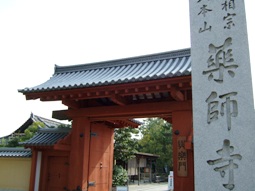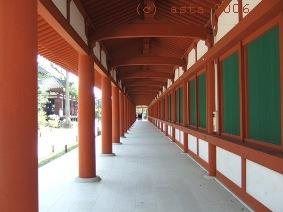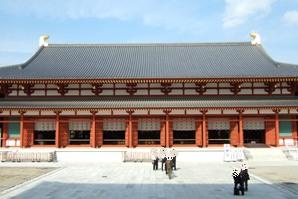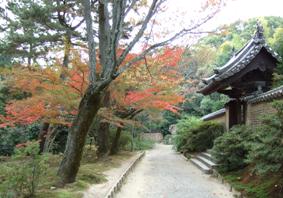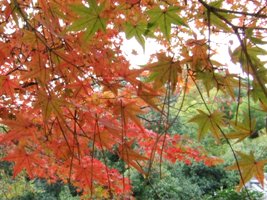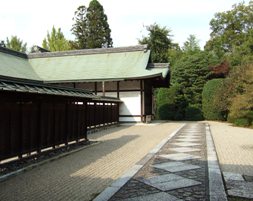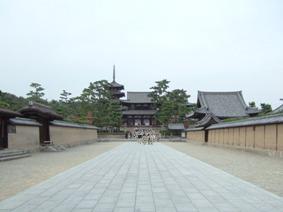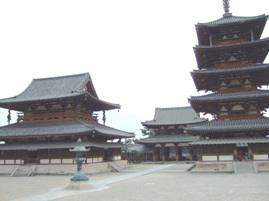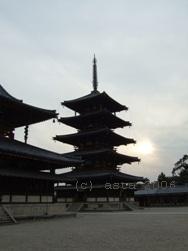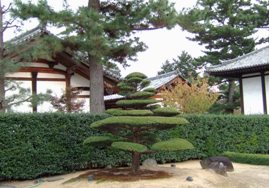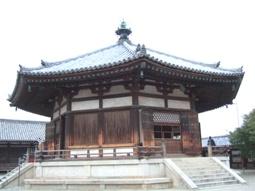Tai-meshi ---Sea bream rice
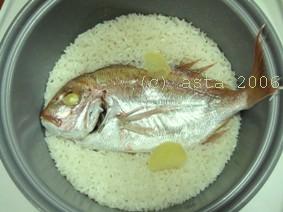
What do you find this?! A sea bream on rice!?
Well, this is my rice cooker, which has just cooked rice and a sea bream together.
(the yellow pieces are slices of ginger)
This cuisine is called "tai-meshi." Tai means "sea bream," and meshi "cooked rice." So this is "sea bream rice."
Tai-meshi is easy to make.
Have a sea bream cleaned along with scales at a shop. Sprinkle enough salt all over the fish and leave it for 20 minutes, and wash the salt away. (this way you can remove the bad smell of the fish)
Put washed rice in the cooker, pour kombu kelp stock, add a bit of sake, salt, soysauce, and mix all.
Then, put the fish on the rice, with slices of ginger for flavoring and odor-removing.
Turn the cooker on and wait. Oh, great smell of sea bream spreading across the kitchen...
...It's done. Open the rid, and--- hello, the sweet breamee!!
By the way, in Japan tai sea bream is considered as a lucky fish, and often served at various kinds of festive occasions.
Why? There may be two reasons.
Sea bream's skin color is red. Red is the color for celebration and congratulation in Japan, so treated is the fish also.
But more, the name has the key.
In Japanese, there is an adjective "medetai (pronounced like may-day-taai)," which means "happy," "fortunate," "successful," "joyful" etc.
Sometime, the fish's name tai got associated with the word medetai, ending that the fish itself stands for "medetai" and served at medetai occasions, like passing the entrance exam or getting married.
Now you may wonder why I made tai-meshi rice this time. Did something good happen to me??
---
No, unfortunately not. I just made tai-meshi because I SIMPLY WANTED TO EAT IT!! :)
...What is the 'lucky food' in your country?
